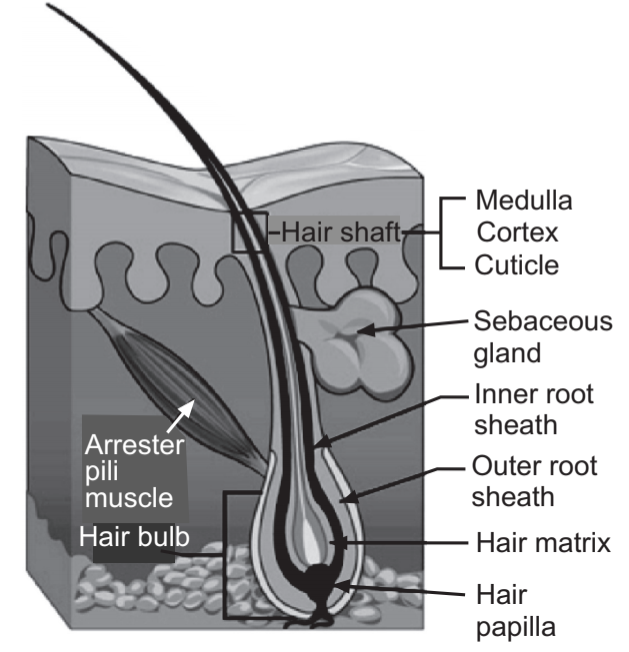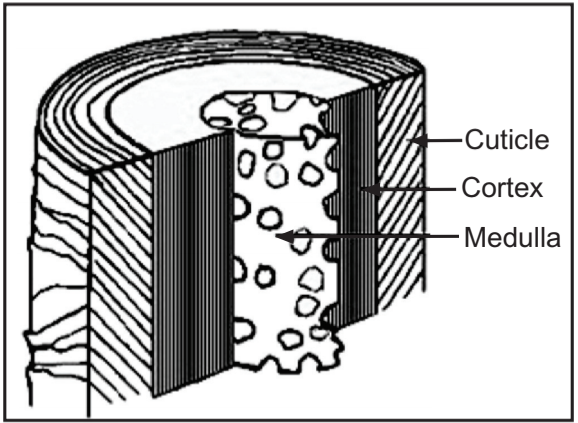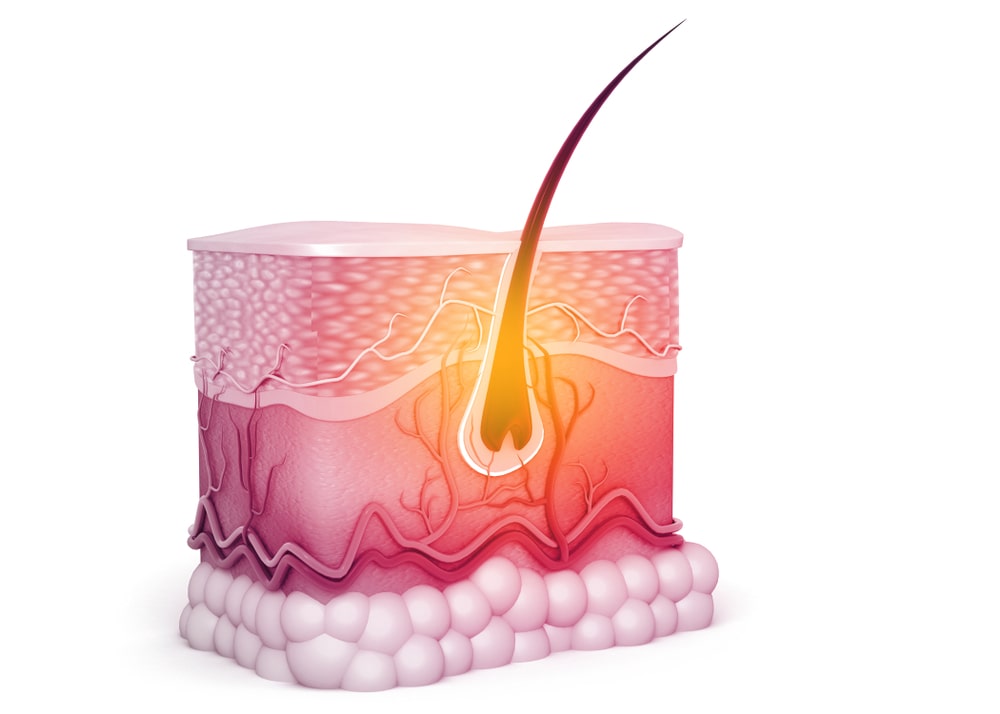Hair Structure: Hair is simple in a structure made of the root and shaft. The root is enclosed in the hair follicle, submerges into the skin in inclination and ends down to the bulb; while the hair shaft is the part of the hair seen above the skin. Hair is made up of a tough protein called keratin that decides the strength of hair. The hair structure is made up of different layers and structures. Usually, hair consists of two parts: (a) Follicle; (b) Shaft. The hair follicle is the centre of biological activity like hair growth, pigmentation; whereas the hair shaft is considered to be dead and is mainly made of protein (Fig.1).

The hair follicle is the point from which the hair grows. It is a club-shaped structure in the skin. At the end of the follicle is a network of blood vessels that supply nutrients to feed the hair and help it grow. This is called the papilla. Surrounding the papilla is a bulb. The hair bulb forms the base of the hair follicle. In the hair bulb living cells divide and grow to build the hair shaft. Blood vessels nourish the cells in the hair bulb and deliver hormones that modify hair growth and structure at different times of life. Adjacent to the hair follicles is glands. The most important one of these glands is the sebaceous gland, which secretes oil that helps to keep the hair conditioned, is associated with the bulb. The hair bulb has special cells known as melanocytes which produce the pigment called melanin. This melanin gives hair its colour. Within the skin, internal and external root sheaths cover the hair follicles. The outer rooting of a hair follicle has a continuous growth cycle along with the epidermis.
The part of the hair seen above the skin is called the hair shaft. The hair shaft is made up of dead cells that turn into a protein called keratin and binding material, together with small amounts of water. Keratin makes hair both strong and flexible. Like all proteins, keratin is made up of a chain of amino acids that forms a helical, or spiral, shape. These helices are connected by strong bonds between amino acids. These bonds make hair strong.

The hair shaft is formed of three layers (Fig.2):
(i) The medulla: It is the deepest layer of the hair shaft, only seen in large and thick hairs. It is a honeycomb-like keratin structure with air spaces inside.
(ii) The cortex: It is the middle layer of the hair shaft that provides the strength, colour and texture of hair fibre. The cortex is made from tiny fibres of keratin running parallel to each other along the length of the hair shaft. The hair cortex also contains melanin which is made by specialised cells named melanocytes. Melanocytes, which are situated near the hair bulb, inject melanin into the keratinocytes of the new hair shaft. The colour lasts during the hair cycle, from the genesis to the end, when the hair falls.
(iii) The cuticle: It is the outer layer of the hair shaft which is thin and colourless. It serves as protection to the cortex. It is made up of 6 to 11 layers of overlapping semi-transparent keratin scales (which make the hair waterproof and allow it to be stretched). Thick, coarse hair have more overlapping layers of cuticles than fine hair.
It is important to take care of both the follicle and the shaft for healthy and good looking manageable hair. Coconut based hair oils penetrate both into the hair strand as well as the hair follicle. Coconut oil is one of the very few oils that penetrate up to the medulla which is the innermost layer of the hair strand.
Make sure you also check our other amazing Article on : Cold Cream
